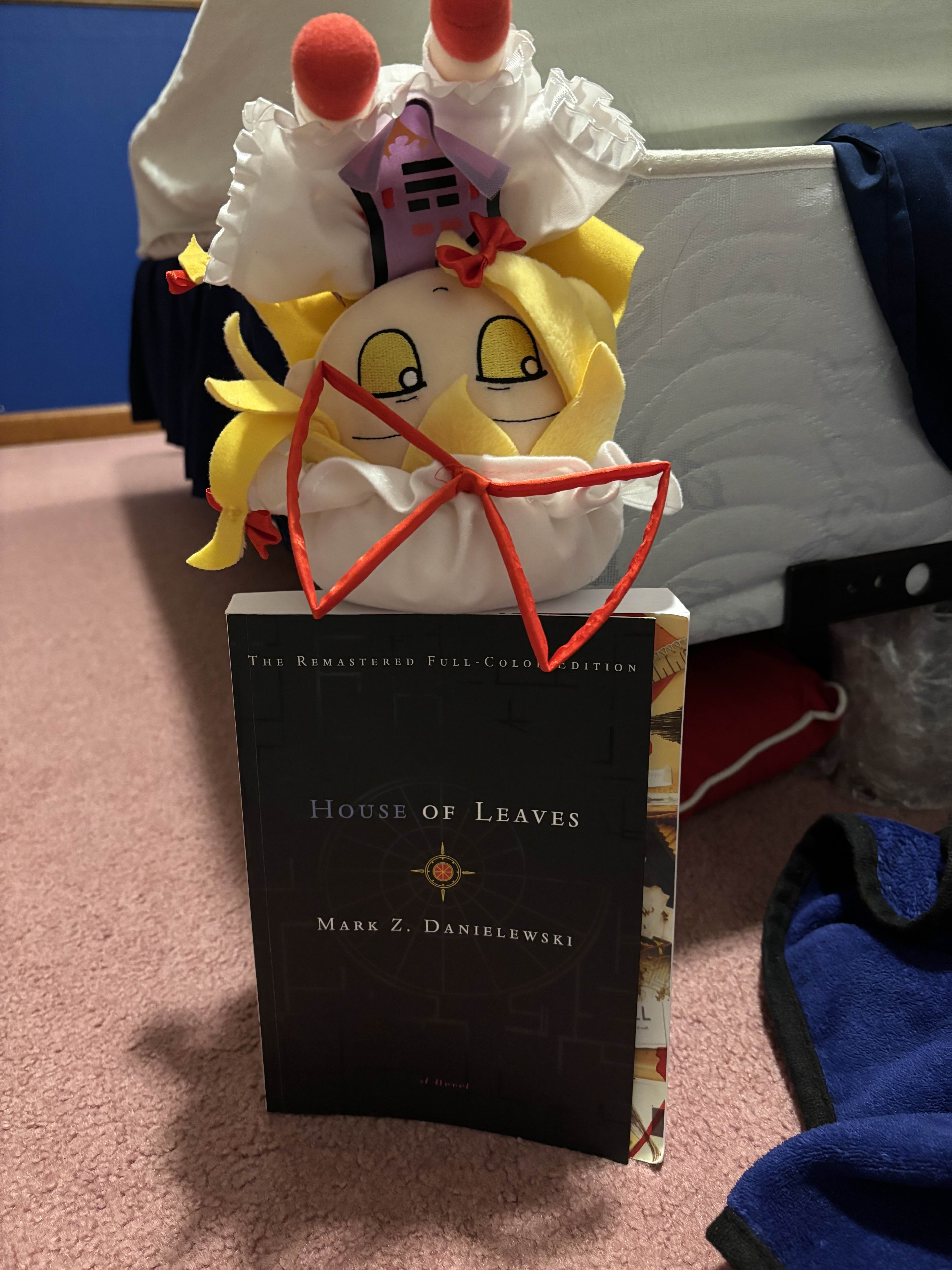Apologies in advance for anyone who was hoping that this post would be self-demonstrating in some sort of way.
How does one chronicle insanity; the documentation of something that constantly shifts in ways that make no physical sense and yet perfect narrative sense? House of Leaves tackles this challenge by contorting the physical text itself in ways that mirror the movements of the house on Ash Tree Lane and the entities that have stepped inside it during the duration of the in-universe film The Navidson Record.
There are things that mankind was not meant to know in full. Strangely, this truth often interplays with and brushes up against anything that would add to the mystery. Excisions occur throughout House of Leaves, from the trademark red (and eventually purple) strikethroughs, to inked out text represented by walls of black X-es, to the blank brackets of being burned away, to literal blank spaces and literal pages missing. Leaves in the book that would otherwise not be blank can and will be redacted out because of these elements; their stylistic impact undeniable. In a similar manifestation of how the true form of the house cannot be grasped, what few fixed measurements we get include a quarter (allegedly) falling a distance further than the circumference of the Earth, and rock samples from the "bottom" of the spiral staircase being older than the solar system itself.
As the explorations throughout the house get screwier, so does the text formatting. There are a few sections that I would describe as danmaku in book form: you are blindsided simply by trying to read all the text on the page, and then are forced to zoom way out and realize that a well-drawn pattern is afoot (ie: excisions forming a lock and key to indicate that there is more to "unlock" further in the story, and a footnote listing everything the house doesn't have (both forwards and backwards) that is contained within the same blue square for pages upon pages to represent the hole in the wall that Holloway creates and gazes through, unveiling an endless amoung of rooms and hallways). The other main text and footnotes surrounding these elements are distorted upon themselves much like the reality of the house. At some point you recognize a sequence of words in the text are acronyms and then search for more yourself. In effect, you are constantly on edge simply trying to determine how to hold the book and in what order to read what is on the page. You'd think the presence of footnotes and footnotes of footnotes would help in this regard, but not always since they often have symbols that aren't ascending ordinal numbers.
Most stunning in this regard, however, is the profound feeling of emptiness as doom awaits as a result of the delirium the house causes. In these moments where the cast is faced with oblivion, the words that do get printed on these otherwise blank pages take on the shape of the nature of their downfall. Particularly evocative instances of this include Jed's death and the moments surrounding it, the blank space of film running out at a pivotal moment in a rescue mission, and the entirety of Navidson's final descent into the house.
Paranoia is the name of the game here. Befitting a story about alien geometries, House of Leaves skips straight from the third wall to the fifth wall. The trust you have in both the fact that what is written on the page exists in-universe and that it doesn't exist in our universe is constantly being eroded. Why is Zampanò so hellbent on excising any and all mentions of the Minotaur? Why do the Editors have to intervene on matters such as whether real-world figures have said things about the house that Zampanò alleges they did? Why is there exactly one sentence of purple text? Why are characters in the book House of Leaves interacting with a copy of the book House of Leaves? Zampanò says that the house dissolved after Navidson leaves it for the last time; is this the real reason why Johnny Truant can't find it? The "contrary evidence" appendix, despite what one may think based on the title, is meant to refute the Record's nonexistence, a intense double negative. The index has entries for things that don't exist either, and some of the DNE items actually do exist (There is a "house" that intentionally didn't escape blueing. Have fun searching!)
The main emotional reaction evoked out of me during my time reading House of Leaves was suspense arising from the approaches to storytelling and formatting that Danielewski used. This is about what I expected given my cursory knowledge of the novel going in. In essense, this means that the novel did get the chance to perform its metafictional trickery on me, as the house certainly has a twisted idea of what wish fulfillment looks like. From a website more committed to the bit than I am:
One could interpret the house's behavior as a sort of twisted wish fulfillment. Holloway wanted an ultimate adventure and to be remembered - he got it, and lost his life and sanity in the process, while also becoming infamous as a murderer. At least in the world of the book. Tom wanted to be as respected as his Pulitzer prize winning brother. After the house killed him, Will lamented about his failure to save Delial and saw Tom as a hero. The Navidsons wanted to come together as a family, the house terrorized them until they ultimately did. The children were traumatized in the process and Will lost a limb and parts of his face to frostbite, but you can't deny that they were together in the end.
